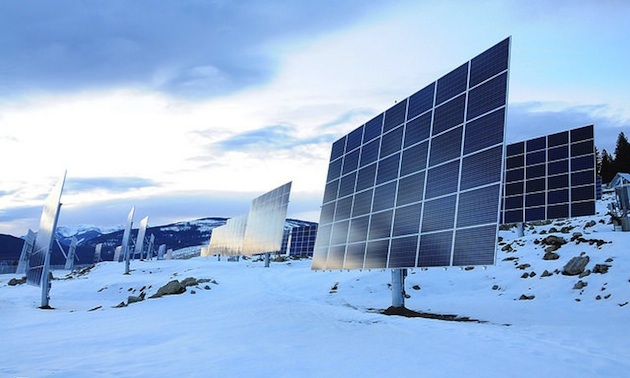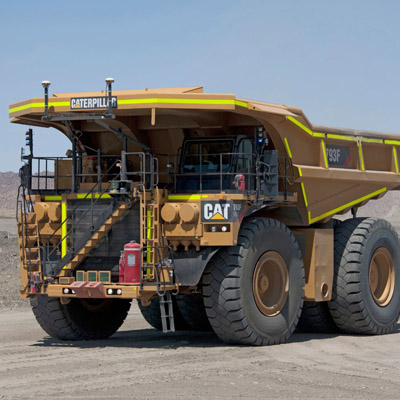Kimberley’s SunMine to light up in June 2015
Western Canada’s largest solar installation puts this entrepreneurial East Kootenay community on the map.

The SunMine's 4032 solar panels are able to track the sun as it moves across the sky, tilt to dump snow and assume a flat position during strong winds. — Photo courtesy Teck and the City of Kimberley
Many small communities across Canada seek to draw attention through roadside attractions like having the world’s largest Easter egg, beaver, nickel or hockey stick. The East Kootenay town of Kimberley, B.C., has taken things one step further by constructing Western Canada’s largest solar farm. However, rather than merely attract tourists, the SunMine will generate 1.048 megawatts of electricity—not to mention a steady stream of revenue for the community.
“The bottom line is, we’re looking to advertise what we have in the community, in the region,” said Kimberley economic development officer Kevin Wilson. “It’s a sunny place, sunny enough we can make money selling solar power.”
Despite its money-generating potential, the SunMine isn’t exactly a get-rich-quick scheme. After servicing the city’s $2 million loan for the project as well as maintenance costs, the business plan estimates that the community will net an average of $57,800 annually over 25 years. However, the site has the capacity to generate up to 200 megawatts—not that the city is planning to expand any time soon.
“I’m not sure the appetite exists on city council to own and operate an expansion,” Wilson said. “But we have talked to half a dozen parties who are interested in expansion potential.”
The latest in a series of bright ideas
Wilson points out that Kimberley has had a history of undertaking entrepreneurial initiatives, ever since it first became clear that the Sullivan Mine, which was the community’s primary employer, was due to close in 2001. Seeking to reinvent itself as a tourist destination, the city bought and operated the local ski hill for ten years, built the Trickle Ridge golf course right next to the hill, and then packaged them together and sold them to a private investor. More recently, the city built a conference center with much the same goal in mind.
“The SunMine is really just one more step in that evolution,” Wilson said.
The SunMine is not your run of the mill solar farm. Employing state-of-the-art technology, the site’s 42032 solar panels are able to track the sun as it moves across the sky, tilt and dump snow when it reaches a certain thickness and assume a flat position during strong winds. These and other innovations help make the panels over 65 per cent more efficient than standard designs.
With the four-year project nearing completion, Wilson said the development and construction process could not have gone better. First off, when the proposal was put to a referendum back in 2011, 76 per cent of residents voted in favour of the project. However, even with the majority of the community on board, Wilson said the project required 18 different agreements with eight organizations, including Teck, BC Hydro, the provincial government, the Columbia Basin Trust and primary contractor Conergy, among others. Not only was the city able to navigate all of those relationships successfully, but Wilson said the project also came in very close to being on budget.
“Considering how unique the project is,” Wilson said, “and how many firsts were involved—first large scale solar installation in B.C., first on a brown field, first using this technology—we’re happy to be where we are at, because so many factors could have affected the outcome.”
The learning curve
For other communities that are thinking of following Kimberley’s example, Wilson has some solid advice.
“Engage the right experts early,” said Wilson. “That’s not to say we didn’t, but we definitely had to deal with some assumptions we made early on that cost us. We could have saved some work on the tail end of things if we had spent money early on the right expertise early on, rather than being comfortable with specifications being undefined until partway through the project.”
If all goes according to plan, the SunMine will become fully operational in early June. To help celebrate what the community has accomplished and to educate people on the project, the city will be conducting free tours for anyone who is interested.
“Seeing is believing,” Wilson said. “Being up close and standing beneath those masts, which are 40 feet tall and with a solar tabletop that is 20 by 30 feet, it’s impressive to see in person, and we hope to enable people to see them for themselves.”




